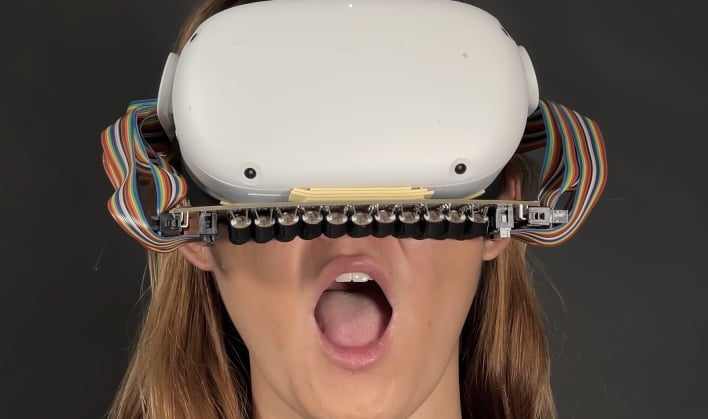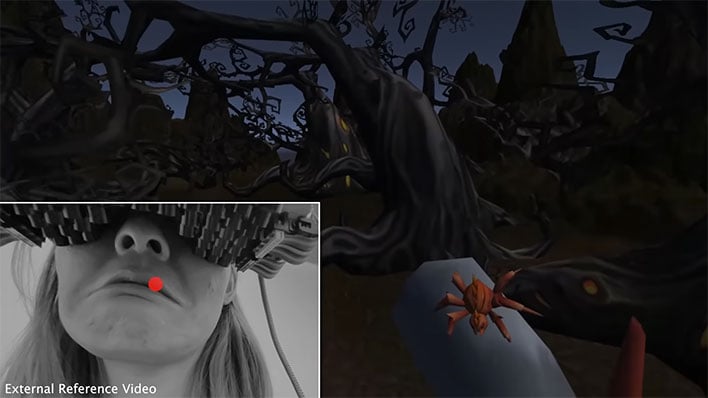VR Mouth Haptics Demo With Spiders Will Give You The Heebie Jeebies

Virtual and augmented reality has been making strides in terms of advancement over the years. Those advancements have provided users with a more immersive and realistic environment in which to whet their appetite for the technology.
Users have expressed that they do not want to be hampered with extra devices or anything that would limit freedom of movement. Therefore, vibration motors in handheld controllers are the current consumer state of the art. More sophisticated approaches do exist, such as exoskeletons, haptic vests, and body-cantilevered accessories, but they have not yet reached a consumer-level adoption.
Some researchers with Future Interfaces Group, however, feel that one particular body part has been largely overlooked, the mouth. Being the second most sensitive body part, only behind the fingertips, they feel that haptic feedback could provide another means of immersiveness in the user's virtual experience. The mouth is well within the proximity of the headset and offers an excellent opportunity to enable on-and-in-mouth haptic effects, without the need for extra wires or accessories.
The hardware is used to focus air-borne acoustic energy onto the lips and into the mouth, creating sensations such as taps and continuous vibrations. These can also be animated along arbitrary 3D paths. These effects are not limited to just the lips. They can also be felt on the teeth and tongue as well. When put alongside graphical feedback, the effects can be very convincing, and in turn, heightening the level of realism and immersion.
Several sensory demos have been built, which include raindrops, mud splatter, pushing through cobwebs (imagine feeling a spider crawling along or even inside your mouth), and crawling bugs. That's right, one of the demos for this innovative tech is the sensation of spiders on a user's mouth.

"In this haunted forest scenario, users must walk through spider webs to get to a small clearing. Upon touching a spider web, and X-swipe is animated simulating the spiderweb being drawn off the face," the video's narrator explains. "In the clearing, a spider jumps onto the user's mouth, which generates random impulses that simulate an insect scurrying around the face."
If NASA's eerie recording of a black hole didn't give you nightmares, this might. Later on in the demo, the user is tasked with shooting a flare gun at a spider, "exploding it into goo that splashes the user."
The in-air-haptics using ultrasonic phased arrays is not a new technology, but this is the first time it has been used for a VR/AR headset for use on the mouth. Are you ready to feel the bugs crawling on your lips yet?
Top Image Courtesy of Future Interfaces Group

